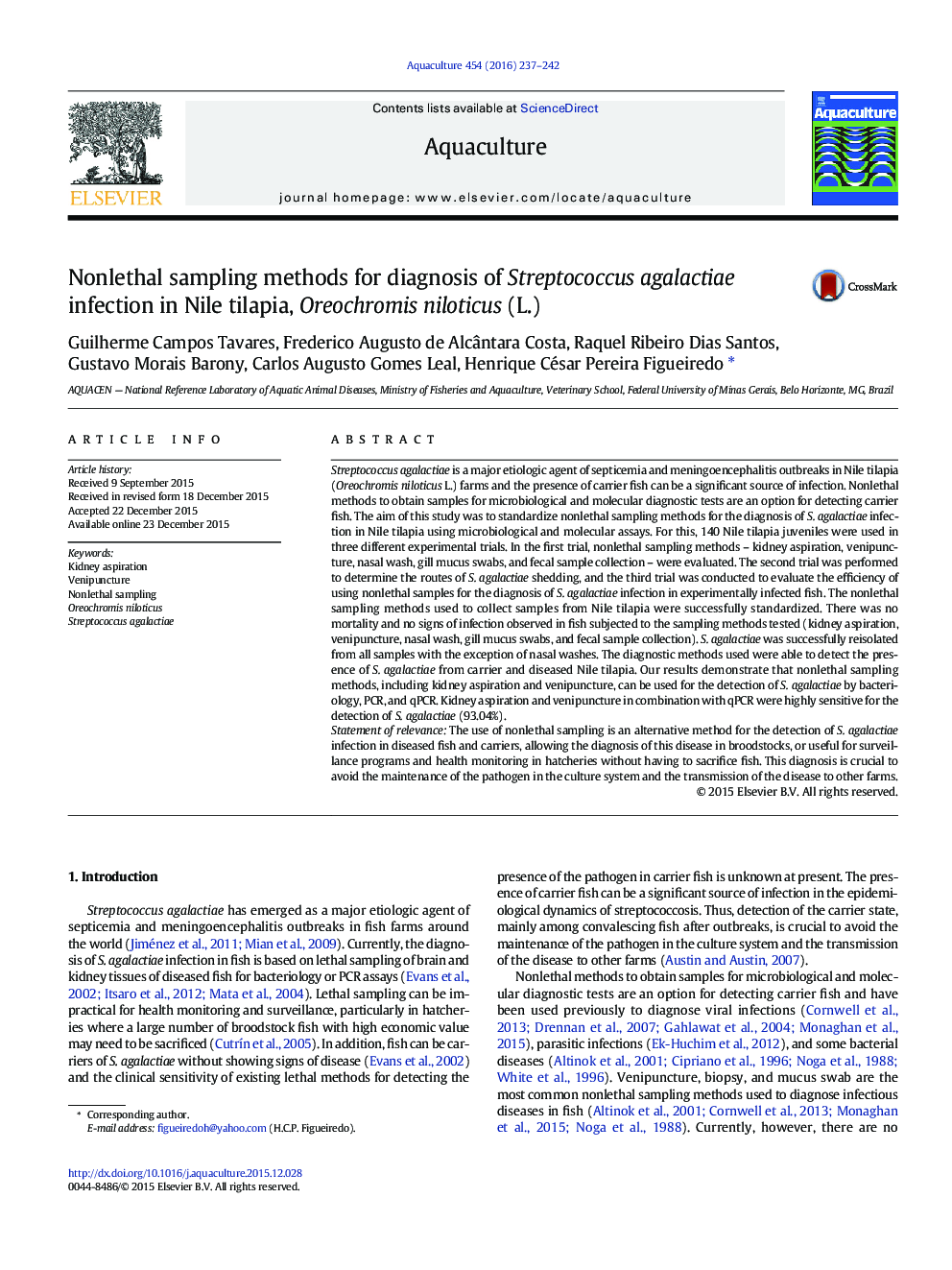| کد مقاله | کد نشریه | سال انتشار | مقاله انگلیسی | نسخه تمام متن |
|---|---|---|---|---|
| 2421489 | 1552833 | 2016 | 6 صفحه PDF | دانلود رایگان |

• The manuscript describes for the first time the use of nonlethal sampling methods for S. agalactiae diagnosis in Nile tilapia.
• Routes of S. agalactiae shedding were determined.
• The diagnostic methods detected S. agalactiae in carrier and diseased fish.
• Nonlethal sampling methods associated with qPCR demonstrated to be more robust than bacteriology to the diagnosis of S. agalactiae infection.
Streptococcus agalactiae is a major etiologic agent of septicemia and meningoencephalitis outbreaks in Nile tilapia (Oreochromis niloticus L.) farms and the presence of carrier fish can be a significant source of infection. Nonlethal methods to obtain samples for microbiological and molecular diagnostic tests are an option for detecting carrier fish. The aim of this study was to standardize nonlethal sampling methods for the diagnosis of S. agalactiae infection in Nile tilapia using microbiological and molecular assays. For this, 140 Nile tilapia juveniles were used in three different experimental trials. In the first trial, nonlethal sampling methods – kidney aspiration, venipuncture, nasal wash, gill mucus swabs, and fecal sample collection – were evaluated. The second trial was performed to determine the routes of S. agalactiae shedding, and the third trial was conducted to evaluate the efficiency of using nonlethal samples for the diagnosis of S. agalactiae infection in experimentally infected fish. The nonlethal sampling methods used to collect samples from Nile tilapia were successfully standardized. There was no mortality and no signs of infection observed in fish subjected to the sampling methods tested (kidney aspiration, venipuncture, nasal wash, gill mucus swabs, and fecal sample collection). S. agalactiae was successfully reisolated from all samples with the exception of nasal washes. The diagnostic methods used were able to detect the presence of S. agalactiae from carrier and diseased Nile tilapia. Our results demonstrate that nonlethal sampling methods, including kidney aspiration and venipuncture, can be used for the detection of S. agalactiae by bacteriology, PCR, and qPCR. Kidney aspiration and venipuncture in combination with qPCR were highly sensitive for the detection of S. agalactiae (93.04%).Statement of relevanceThe use of nonlethal sampling is an alternative method for the detection of S. agalactiae infection in diseased fish and carriers, allowing the diagnosis of this disease in broodstocks, or useful for surveillance programs and health monitoring in hatcheries without having to sacrifice fish. This diagnosis is crucial to avoid the maintenance of the pathogen in the culture system and the transmission of the disease to other farms.
Journal: Aquaculture - Volume 454, 1 March 2016, Pages 237–242